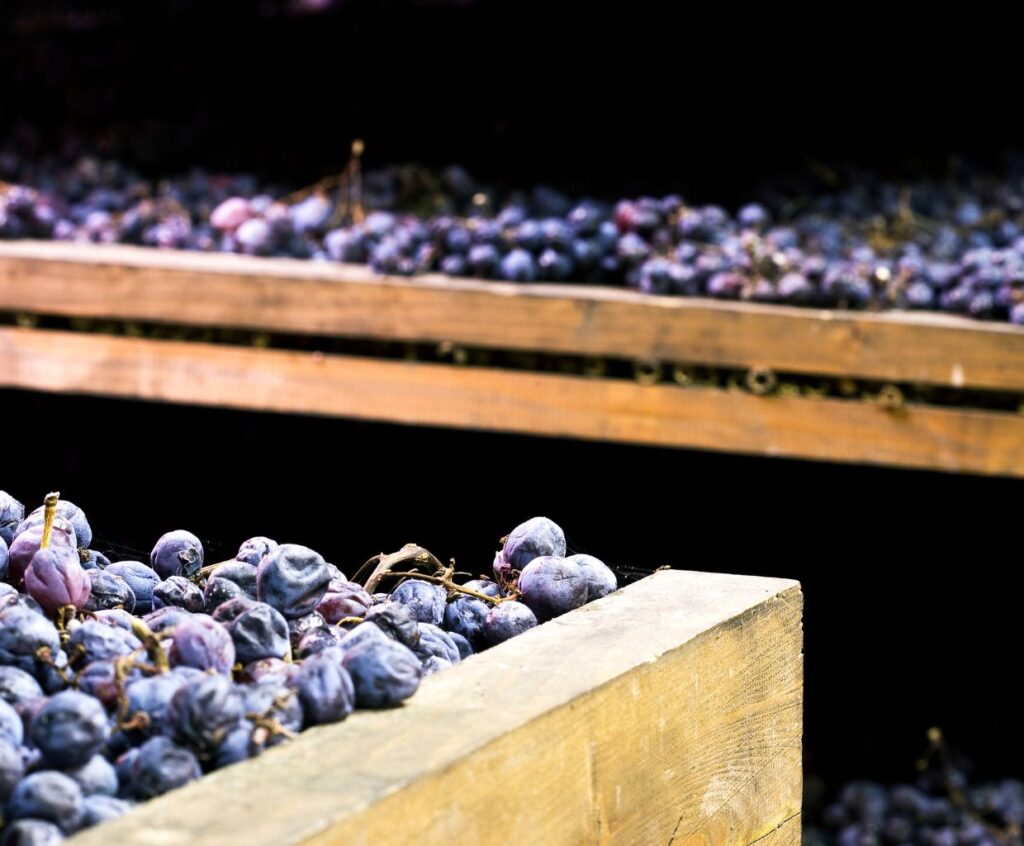What is Amarone Wine and How is it Made?
Welcome to the world of Amarone wine – an authentic Italian gem! If you are a wine enthusiast, you have likely heard of this luscious, full-bodied red wine.
Amarone holds a special place in the hearts of wine lovers for its unique production method and exceptional taste.
What is Amarone Wine?
Amarone is a wine originating from the Veneto region in northeastern Italy. It is made primarily from grapes such as Corvina, Rondinella, and Molinara, which are native to this region. The unique process of drying the grapes before fermentation sets Amarone apart from other wines.
The Production Process
The grapes used for Amarone are carefully hand-picked at their peak ripeness. Instead of being pressed immediately, they are left to dry for several months. This drying process, appassimento, allows the grapes to lose moisture, concentrating their flavors and sugars. The grapes are traditionally dried on straw mats in large, well-ventilated rooms or lofts.
Once the grapes have reached the desired level of dehydration, they are gently pressed, and the resulting juice is fermented. The fermentation process is typically lengthy and slow, allowing the wine to develop its complex flavors and aromas. Amarone wines are known for their rich, dark fruit flavors, hints of chocolate, and sometimes a slight raisin-like sweetness.
The Result: A Wine to Savor
The result of this meticulous production process is a wine that is full-bodied, bold, and often higher in alcohol content compared to other red wines. Amarone wines are typically dry, meaning they have low residual sugar, but their natural fruitiness gives them a perceived sweetness that is incredibly pleasing to the palate.
Amarone is best enjoyed on special occasions or paired with hearty dishes. Its robust flavors and velvety texture make it an excellent companion for rich meat dishes, aged cheeses, or even dark chocolate desserts. It is a wine that demands attention and rewards those who savor it slowly.
What are the critical characteristics of Amarone wine?
Amarone wine is a rich and full-bodied red wine from the Valpolicella region in Italy. Here are some critical characteristics of Amarone wine:
1. Production method: Amarone uses a unique winemaking process called appassimento. This involves drying the grapes, typically Corvina, Rondinella, and Molinara varieties, for several months after harvesting. This concentrates the sugars and flavors in the grapes, resulting in a wine with higher alcohol content and intense flavors.
2. Full-bodied: Amarone wine is known for its full-bodied nature, with a rich and velvety texture. It has a high alcohol content, usually 14% to 17%, contributing to its fullness and weight on the palate.
3. Intense flavors: Amarone wine is characterized by its bold and intense flavors. It often exhibits notes of dark fruits such as black cherry, plum, and raisins. It can also have hints of spices, chocolate, tobacco, and dried herbs. These flavors are a result of the appassimento process and extended aging.
4. Complexity and age-ability: Amarone wines are highly complex and can develop further with aging. They are typically aged for at least two years in oak barrels, which adds complexity and enhances the wine’s structure. Amarone can age well for several decades, developing more nuanced flavors and softer tannins.
5. High tannins: Amarone wines tend to have high tannins, contributing to their structure and longevity. These tannins can be firm and grippy, especially in younger vintages. The tannins become more integrated and smoother with aging, resulting in a harmonious wine.
6. Sweetness level: While Amarone is not a sweet wine, it can perceive sweetness due to its ripe fruit flavors and high alcohol content. However, it is still a dry wine and not classified as a dessert wine.
Overall, Amarone wine is a powerful and complex red wine with intense flavors, high alcohol content, and a full-bodied character. It is often enjoyed as a sipping wine or paired with rich and flavorful dishes such as roasted meats, game, aged cheeses, or dark chocolate.
What is the recommended aging potential for Amarone wine, and how does it develop over time
Amarone wine is known for its excellent aging potential and can develop and improve over time. The recommended aging potential for Amarone wine is generally around 20 to 30 years. However, some high-quality Amarone wines can even age well for 40 to 50 years.
Amarone wine undergoes several changes that contribute to its development and complexity during the aging process. Initially, the wine is rich in tannins and exhibits intense flavors of dark fruits, such as black cherry, plum, and raisin. As the wine ages, these tannins soften and integrate, resulting in a smoother, more refined mouthfeel.
Over time, the wine also develops secondary and tertiary aromas and flavors. These can include notes of dried fruits, such as figs and dates, as well as hints of tobacco, leather, spice, and earthiness. The wine’s color may also evolve, becoming more profound and brick-like.
It’s important to note that not all Amarone wines have the same aging potential. Grape quality, winemaking techniques, and storage conditions can significantly affect how an Amarone wine develops. Therefore, it is advisable to consult specific producer recommendations and expert opinions for individual bottles of Amarone wine.
What is Amarone Wine – In Conclusion
Amarone wine is a true testament to the craftsmanship and dedication of Italian winemakers. Its unique production process and exceptional flavor profile make it a standout choice for wine enthusiasts seeking something special.
So, next time you want to indulge in a glass of red wine, consider pouring yourself a glass of Amarone and letting its rich, complex flavors transport you to the beautiful vineyards of Italy.




